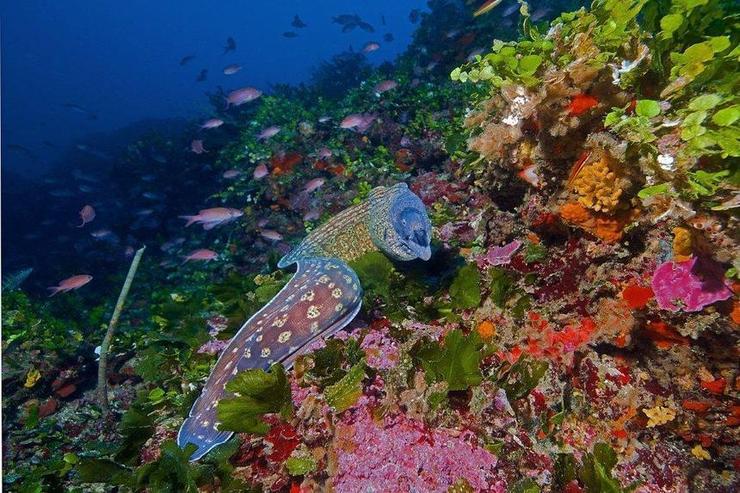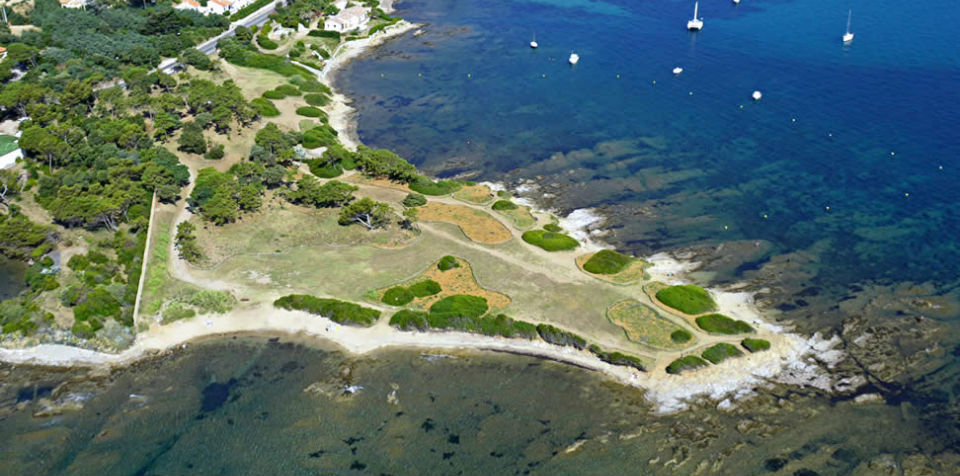Professional underwater photographer for 30 years, Philippe Joachim has scuba dived in practically all the oceans in the world. From the north Pacific to the Indian Ocean, passing through the Carribean and the Red Sea, he has seen almost everything on the blue planet. Co-author with Alain Ponchon of the book 100 gorgeous scuba dives in the Var, from Saint-Cyr to Saint-Raphaël, it is clear that: “When it comes to scuba diving sites, the Var compares favorably with any other destination. And I can tell you that when I talk about my scuba diving experience throughout the year by the Hyères islands, they look at me with envy.”
The attraction of shipwrecks
If Port-Cros and the islet of Gabinière, symbolic of the Mediterranean with their countless grouper fish, are a significant element of these dives, the underwater wonders of the Var seem infinite. “From Saint-Cyr to Saint-Raphaël, it doesn’t at all look alike. Of course, you can see gorgonian coral and Posidonia pretty much everywhere, but the arrangement of the rocks is very different,” Philippe Joachim explains.
But what really gives the Var its reputation is the contemporary wrecks, among which are the mythical Donator and Grec.
Finally, all that is missing to compete with destinations such as Polynesia, is the sharks. “They are there but we don’t see them. Apart from dogfish in winter,” Philippe Joachim ensures.
Exceptional underwater spots popular with scuba divers are the focus of the ecological organization by the marine Observatory.
There are some fascinating shipwrecks, Rubis and Togo, at the sites of Roche Michel and the Sardinaux. Passing by the beacon of Rabiou, the seafloor of the Golf also contains a few treasures, which are very popular with scuba diving clubs.
These last few have long asked for a better procedure to be able to make the most out of the five sites without ruining the seafloor with anchors.
From this point on, it will be done thanks to the marine observatory.
The organization was previously more centered on the Rayol-Ramatuelle axis, but since the merging of the communes, the jurisdiction was enlarged to Saint-Maxime.
Thanks to this new configuration, the marine observatory could finally deal with a major project: the ecological anchors: “Thanks to a specialized company, we were able to install connector boards with docking lines connected to buoys on the surface. These buoys are equipped with rings meant for boats that now no longer need to throw their anchor,” commented Marion Thomassin, assistant in charge of the mission at the observatory.
This is great news for the scuba diving clubs of the golf, as Franck Mottair of H20 in Sainte-Maxime confirms: “ The richness of the fauna and flora is what makes our business a success. By giving us the ability to protect them, we can make people discover these remarkable sites in complete serenity.”
Many steps had to be taken, before being able to begin this work costing almost €80,000: “First we have targeted the needs of the clubs before going scouting on site. Then we needed to find the suitable placements for the anchor points.”
Gorgonian coral and submarines
Facing the Cape of Saint-Tropez, on the Rabiou side, the garden of gorgonian coral is developing, with gorgeous plants with colors that vary depending on their depth.
For beginning scuba divers, the Sardinaux zone, an ideal playing field, has seafloors from 2 m down to 45 m and a vast collagen plateau full of fish. Please note that groupers are now coming back since they are protected by a moratory and that you can see banks or barracudas as well.
If you’re an avid diver, you won’t want to miss the many wrecks that lie on the seafloor of the Gulf of Saint-Tropez. Like the underwater Rubis, all along Cape Camarat. A gem of the Second World War, (length: 60m, height: 8m) , it was sunk to prevent capture by its enemies. You should also see the Togo (Cavalaire) or the Espingole (La Croix-Valmer), a destroyer that collided with the Petit-Sec at full speed on February 4, 1903. A playful way to dive into history 🙂


